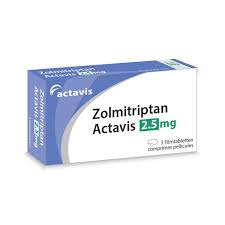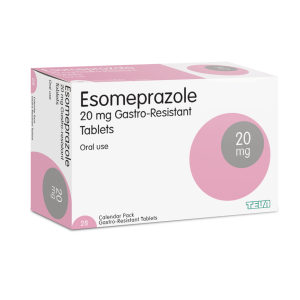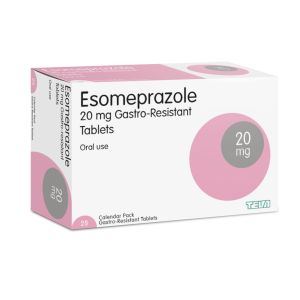Evra Patch
Safe and Secure
- Safe & Discreet Available 24/7
- Fully inspected and regulated service
My Chemist Plus offers the best place to buy Evra Contraceptive patch with next day delivery available within the UK. To purchase Evra, you will need a prescription, which is available through our free online consultation service. Each item you purchase will sent via secure and discreet packaging to ensure that you receive your medicine in a complete and efficient manner.
Evra Transdermal Patch
The Evra Transdermal Patch is a small patch that sticks to the skin and acts as hormonal contraceptive to prevent pregnancy. It contains two types of sex hormones- a progestogen called Norelgestromin and an oestrogen called ethinyl estradiol.
The Evra transdermal patch works by preventing the release of an egg, known as ovulation, during the menstrual cycle. It also causes vaginal fluid to become thicker, helping to prevent sperm reaching the egg (fertilisation) and will change the lining of the uterus to prevent a fertilised egg from attaching itself.
When used correctly the patch has more than a 99% effective chance at preventing pregnancy.
The Ortho Evra Contraceptive Patch is available to buy via My Chemist Plus as
- 9 (three months) patches
- 18 (six months) patches
Evra Transdermal Patch Instructions
Instructions on how to use the patch should be always be followed by how your doctor or pharmacist has prescribed or by following the steps provided in the patient information leaflet.
Instructions for the patch include:
- In weeks one, two and three only put on one patch and leave it for exactly seven days.
- In week four, do not put a patch on this week.
If no hormonal contraceptive has been used during the previous cycle you can start this medicine on the first day of the next period. If one or more days have passed since the start of your period, consult your doctor about using a temporary non-hormonal contraceptive.
How to use Evra Patch
Day 1 will be the day you apply the first patch and the ‘patch change day’ will on this same day every week.
- Using the fingers, open the foil sachet
- tear along the edge to open it. Do not use scissors
- grasp the corner of the patch and gently take it from the foil- Sometimes the patches can stick to the inside of the sachet, be careful not to accidently remove the clear covering as the patch is removed
- peel away half of the clear protective cover
The patch should then be put onto your skin
- Take off the other half of the covering
- press down firmly and hold it there with the palm of your hand for 10 seconds
- ensure that the edges stick well
- once the patch is on, wear it for seven day
- once the first “Patch Change Day” has arrived, take off the used patch and put on a new patch immediately.
Where to Put Evra Patch – Evra Patch Placement
You should choose a place to out the patch on your body, if you are unsure you can consult your doctor or pharmacist.
- Always put the patch on clean, dry, hairless skin
- You should choose places where it won’t be rubbed by tight clothing, buttock, abdomen, upper back or upper outer arm
- The patch should never be placed on the breasts
Evra Patch How Long Before Effective
If the Evra Patch is used on the first day of your period, and up to and including the 5th day of your period, you should be protected from pregnancy immediately. However, if the patch is used on any other day, additional contraception will be needed for the first 7 days.
Evra Patch Side Effects
As with any medication side effects can occur when taking Evra contraceptive patch but these do not affect everyone. If you experience any of the side effects, or these become severe or persistent, please consult your doctor.
Very Common side effects include:
- Headache
- Nausea
- Breast tenderness
Common side effects include:
- Vaginal yeast infection, sometimes called thrush
- Mood problems including depression, mood swings, anxiety, crying
- Dizziness
- Migraine
- Stomach ache or bloating
- Vomiting or diarrhoea
- Muscle spasms
Uncommon side effects include:
- Allergic reaction
- hives
- Water retention / swelling
- High fat levels in the blood
- Insomnia
- Low sex drive
- Vaginal dryness
- Rise in blood pressure or high blood pressure
Rare side effects include:
- Harmful blood clots in the legs, feet, lung, heart, stroke
- Breast, cervical or liver cancer
- Anger or feeling frustrated
- Yellowing of the skin or whites of the eyes
- Itchy skin
- Gallbladder inflammation
Evra Patch Alternatives
My Chemist Plus offers many other Evra Patch alternatives and contraceptive methods, some of these include:
- Microgynon
- Cerazette
- Yasmin
- Rigevidon
Combined Oral Contraceptive
The combined pill is another term for the pill, with the combined pill containing two artificial versions of the female hormones oestrogen and progesterone which are produced naturally in the ovaries. The combined pill as a prevention of becoming pregnant is effective by 99%.
The recommended way to use the pill is to take one every day for 21 days then have a break for 7 days, during which time you should have a period. After 7 days you begin to take the pill again.
It is advised to take the pill at the same time every day to form a routine, otherwise there is a risk of pregnancy, particularly if you miss a pill or vomit or have severe diarrhoea.
Please note that some medicines can affect the efficiency of the pill so you should consult your doctor before taking any other tablets.
If you suffer from heavy or painful periods, PMS (premenstrual syndrome) or endometriosis the combined pill can be an effective medication to help ease your symptoms.
Please note that the pill does not protect against sexually transmitted infections (STIs) so you would require a condom to protect against this.
How the combined pill works
- It prevents the ovaries from releasing an egg each month (ovulation)
- It thickens the mucus in the neck of the womb, so it is harder for sperm to penetrate the womb and reach an egg
- It thins the lining of the womb, so there is less chance of a fertilised egg implanting into the womb and being able to grow
There are a variety of brands of pill- these are made up of three main types:
Monophasic 21-day pills
The most common type of pill which has the same amount of hormone in it. One pill is taken every day for 21 days and then a break of 7 days. Microgynon, Marvelon, Yasmin and Cilest are all examples of this type of pill.
Phasic 21-day pills
Phasic pills contain two to three sections of different coloured pills within a pack with each section containing a different level of hormones. One pill is taken every day for 21 days and then a break of 7 days. It is important that Phasic pills are taken in the right order. Logynon is an example of this type of pill.
Every day (ED) pills
With ED pills there are 21 active pills and 7 inactive (dummy) pills within each pack. The two types of pills have a different appearance with one pill taken every day for 28 days with no break between the packets. It is important that the everyday pills are taken in the right order. Microgynon ED is an example of this type of pill.
Please ensure that you follow the instructions that come with your packet. If you have any questions you should consult your GP, practice nurse or pharmacist.
What to do if you miss a pill through sickness
If you miss a pill due to being sick, you should use another form of contraception until you have taken the pill again for 7 days without vomiting
Who can use the combined pill
If there are medical restrictions why you cannot take the pill and you are a non-smoker, you can take the pill until the menopause. However, the pill is not the most suitable method of contraception, so you should consult your doctor, nurse or pharmacist to see if this is right for you.
You should not take the pill if you:
- are pregnant
- smoke and are 35 or older
- stopped smoking less than a year ago and are 35 or older
- are very overweight
- take certain medicines (ask your GP or a health professional at a contraception clinic about this)
You should also not take the pill if you have (or have had):
- thrombosis (a blood clot) in a vein, for example in your leg or lungs
- a stroke or any other disease that narrows the arteries
- anyone in your close family having a blood clot under the age of 45
- a heart abnormality or heart disease, including high blood pressure
- severe migraines, especially with aura (warning symptoms)
- breast cancer
- disease of the gallbladder or liver
- diabetes with complications or diabetes for the past 20 years
Risks of taking the combined pill
There are some risks associated with the combined contraceptive pill however these are minimal and for most women, the benefits the pill can provide outweigh the risks.
These risks include:
- Blood clots- The oestrogen in the pill may cause your blood to clot more readily. If a blood clot develops, it could cause deep vein thrombosis (clot in your leg) or pulmonary embolus (clot in your lung)
- stroke
- heart attack
The chances of developing a blood clot is very minimal but your doctor will check if you have certain factors that could put you at risk before they prescribe the pill.
The pill can still be taken with caution if you are identified with a risk factor but is unlikely to be prescribed if you have two or more risk factors
These include:
- being 35 years old or over
- being a smoker or having quit smoking in the past year
- being very overweight (in women with a BMI of 35 or over, the risks of using the pill usually outweigh the benefits)
- having migraines (you should not take the pill if you have severe or regular migraine attacks, especially if you get aura or a warning sign before an attack)
- having high blood pressure
- having had a blood clot or stroke in the past
- having a close relative who had a blood clot when they were younger than 45
- being immobile for a long time – for example, in a wheelchair or with a leg in plaster
- Cancer
There is ongoing research between the link to breast cancer and the pill, it is suggested that users of all types of hormonal contraception have a slightly higher chance of being diagnosed with breast cancer compared to those that don’t use them. However, 10 years after you stop taking the pill, your risk of breast cancer goes back to normal.
Research has also suggested a link between the pill and the risk of developing cervical cancer and a rare form of liver cancer. However, the pill does offer some protection against developing womb (endometrial) cancer, ovarian cancer and colon cancer.







